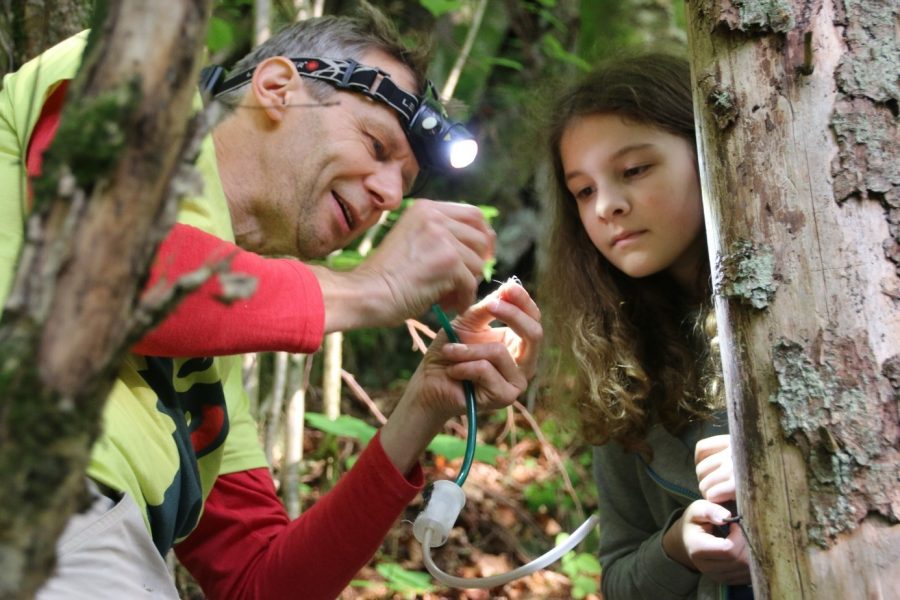Scaffolding as a method for teaching multi-layered topics
by Christina Pichler-Koban
When you think back to your last visit to a forest, what thoughts and memories come up? Did you see any animals or animal tracks? Did you notice birdsong or special smells? Do you think of Little Red Riding Hood and the big bad wolve, conifers, creepers, mushrooms, wood harvesters or climate change?
We all associate countless images and stories with the forest and as a society we demand a number of things from the forest.

Photo: Michael Jungemeier

Photo: Michael Jungemeier
The forest should be …
… be a source of raw materials (for example firewood and building material),
… a habitat for animals and plants,
… provide protection against natural disasters (e.g. avalanches or mudflows),
… protect us as our “green lungs” from climate collapse,
… serve as a place for recreation and relaxation
and much more.
These different uses are often in competition with each other or even mutually exclusive. In return for the many good things that the forest brings us, we must also care for it and preserve it. The topic “forest” is a good example of a Socio-Scientific Issue (SSI), as it is a topic that can be approached from many sides and that holds plenty of discussion material and contradictions.

Photo: Hanns Kirchmeir
Within the framework of the ENSITE project, pre-service teachers are familiarised with different methods of integrating such challenging issues into the classroom. In the Scaffolding module, future teachers learn about the pedagogical concept of the same name and different techniques of scaffolding through a series of forest-related activities. In scaffolding, learners are confronted with a complex topic and are initially supported by precise instructions and clear tasks to approach the topic in a structured way and to work on subtasks independently at first. As soon as the learners are able to do this, the support is gradually withdrawn.
